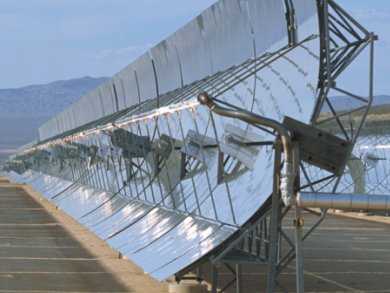Scientists of the Fraunhofer Institute for Solar Energy Systems (Fraunhofer ISE), Germany, have developed a crystalline solar cell with efficiency greater than 20 %. The c-Si solar cell is based on the combination of two cell design technologies: Metal Wrap Through (MWT) and Passivated Emitter and Rear Cell (PERC). In addition, Heraeus has developed a via paste in a joint research project with the Fraunhofer ISE. The conductive paste interconnects the front- and back-side of the MWT solar cell. Heraeus also supplied the front-side paste for this project.
As a crystalline solar cell, the MWT-PERC cell has a silicon wafer at its core. As with MWT cells, the busbars typically found on the front-side of conventional solar cells, are shifted to the back of the cell, thereby reducing front-side shading and allowing more light to actually hit the cell. The reduction of shading increases the efficiency. The additional benefit is that less paste is required. Like PERC cells, the back-side of this cell is designed so that incoming light is reflected back to the wafer, increasing the amount of energy captured by the cell.
Silver metallization pastes are needed as the pathways for conducting the energy generated in the cell to the electricity grid. Silver is the most electrically conductive element in the periodic table and, therefore, is the most widely used component for metallization pastes. The paste is screen-printed on solar cells and subsequently incorporated into the cells during a high temperature sintering process. Precisely formulated silver metallization pastes enable an optimized efficiency gain of the solar cell.
- Heraeus Precious Metals GmbH & Co. KG, Hanau, Germany
- Fraunhofer Gesellschaft, München, Germany




